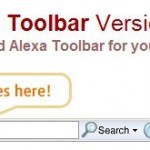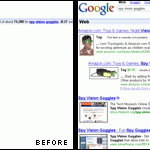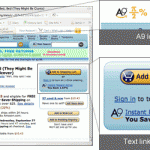However, as Context Links is part of Amazon Associates affiliate program with CPA (cost per action) model, so publishers will only get paid commission when visitors purchase products from Amazon, while both IntelliTXT and Kontera pay with CPM or CPC model, where publishers earn money whenever a visitor visits the website or clicks on in-text ads. So depending on the website’s niche, Context Links may or may not make more money for webmaster compared with IntelliTXT and Kontera.
Best things about Amazon Context Links is that it’s simply too easy to implement, especially for lazy webmasters. With a simply JavaScript, all pages of the website, including future contents, can be monetized and automatically link properly to related Amazon products, saving webmasters the time from having to manually create links. The downsize is that the system may miss out a specific keyword that you want to target for product selling, although there is quick workaround to manually build a product link for the terms that you must want to embed affiliate link, as Context Links will not link any already linked phrases.
Another advantage for Context Links is it’s highly customizable. Associates can configure Context Links to display as conventional links or pop up display an interactive preview which is a small window showing a preview of the appropriate product from Amazon when a user hovers over any of Context Links. Beside, users can also set the number of links allowed on each page, which portion of the page allowed to be linked, which Amazon product categories are linked, whether to match exact product names only, or choose options of single underline, dashed underline, and double underline link formats to indicate to your site visitors that they are Context Links.
Context Links can now be setup at Amazon Associates Central (Amazon Contextual Links for Associates has been discontinued).






